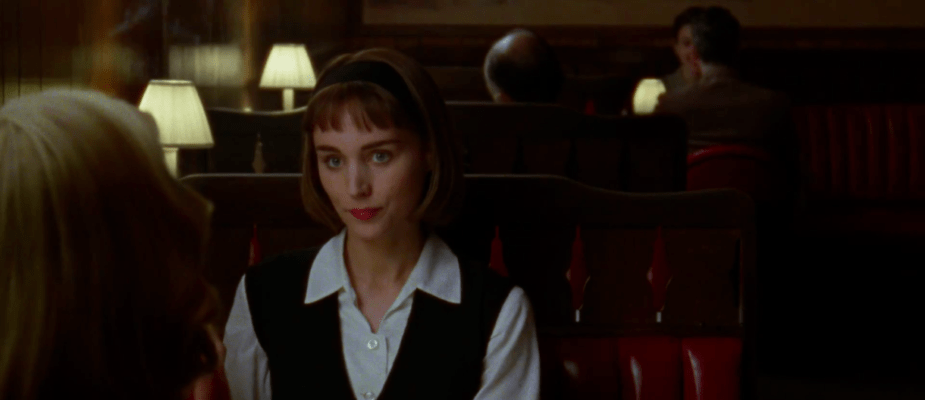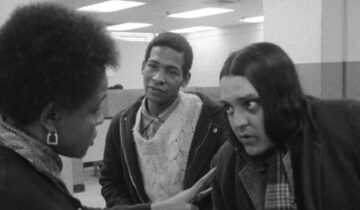In “Part 1. World Premieres,” I took a look back at another in a recent string of solid years for international cinema, which, above all, was distinguished by the truly global situation in which the art currently finds itself – one in which great film art was no more likely to come from one corner of the globe than another. In reviewing the year that was for local commercial premieres, the same could be said equally, assuming that one is discussing quality and not quantity (which, naturally, always favors Hollywood).
In approximate chronology of their date of local release, 2015 saw very good work, in addition to those films cited in Part 1, from Turkey (Winter Sleep, Nuri Bilge Ceylan, 2014), Ukraine (Maïdan, Sergei Loznitsa, 2014), Russia (Leviathan, Andrey Zvyagintsev, 2014), Belgium (Two Days, One Night, the Dardenne Brothers, 2014), Mauritania (Timbuktu, Abderrahmane Sissako, 2014), Romania (When Evening Falls on Bucharest or Metabolism, Corneliu Porumboiu, 2103), the United Kingdom (Mr. Turner, Mike Leigh, 2014; and The Duke of Burgundy, Peter Strickland, 2014), France (La Sapienza, Eugène Green, 2014, co-produced with Italy; Li’l Quinquin, Bruno Dumont, 2014; Clouds of Sils Maria, Olivier Assayas, 2014; and Eden, Mia Hansen-Løve, 2014), Argentina (Jauja, Lisandro Alonso, 2014; and The Princess of France, Matías Piñeiro, 2014), Sweden (A Pigeon Sat on a Branch Reflecting on Existence, Roy Andersson, 2014), Portugal (Horse Money, Pedro Costa, 2014), Germany (Phoenix, Christian Petzold, 2014), Israel (The Kindergarten Teacher, Nadav Lapid, 2014), and Italy (The Wonders, Alice Rohrwacher, 2014). Added to these were a pair of belated (for Oklahoma City) American premieres (American Sniper, 2014; and It Follows, David Robert Mitchell, 2014), and 2015 looks a very strong year indeed (and that’s without straight-to-streaming premieres like Lav Diaz’s epic-length From What Is Before, 2014, Philippines; or films like John Boorman’s Irish Queen & Country , which are now available on home video).
Among major repertory premieres, my own personal highlights included the sublimely poetic The Apu Trilogy (Satyajit Ray, India, 1955-1959) on newly remastered 4K digital; Kathleen Collins’s sharply self-reflexive Losing Ground (1982), an unknown highlight of 1980s American indie cinema and Black independent film alike; a thirtieth anniversary screening of Hou Hsiao-hsien’s A Time to Live and a Time to Die (1985), one of the film’s most responsible for shifting the art film balance from Europe to Asia; From Mayerling to Sarajevo (1941), an under-seen gem from the great Max Ophüls (which happened to depict the lives of the ancestors of the Fabergé exhibition’s guest speaker, Géza von Habsburg); and Jacques Rivette’s monumental Out 1: Noli me Tangere (1971, France; released commercially in 2015 for the first time), an epic thirteen-hour masterwork that screened to a very small – and very devoted – public in Oklahoma, over four consecutive nights. Suffice it to say that 2016 is unlikely to yield anything to approach Rivette’s exhaustive and epoch-defining fictionalization of the act of fiction making.
During the past year, Museum Films also celebrated the 100th anniversary of Orson Welles’s birth (in a program that covered the various phases in his career and included my own favorite of the director’s, The Magnificent Ambersons, with members of star Tim Holt’s family present), the passing of Anita Ekberg with La Dolce Vita (1960, Italy), and the teaming of Yasujiro Ozu and Setsuko Hara on four all-time classics of Japanese cinema, including repertory hits Late Spring (1949) and Tokyo Story (1953). Hara too passed this year, after Museum Film’s September program, making “Ozu on 35mm” a retroactive tribute to the films’ most memorable presence.
Finally, in part one, I made mention of a major new release that’s opening during this holiday season, which I had, as of the earlier writing, not yet managed to see. Well, I saw it over Christmas in the Twin Cities (it will open subsequently in Oklahoma City), and it is indeed one of the best couple of American commercial premieres of 2015. I am, of course, talking about Todd Haynes’s Carol, a film that deftly summarizes the (greatly lagging) social acceptance and intimacy of its central same-sex relationship by tucking its two lovers together in the corners of its tight compositions (as is illustrated by the still at the top). Haynes stages with a purpose, in other words, in this elegantly middle-brow paean to the German-American melodramatist Douglas Sirk, godfather to much of the best Euro-American queer cinema that has come our way since Rainer Werner Fassbinder dominated the 1970s… well dominated apart from Rivette and Out 1 – not that anyone knew it at the time. Carol is Haynes’s best film to date.










